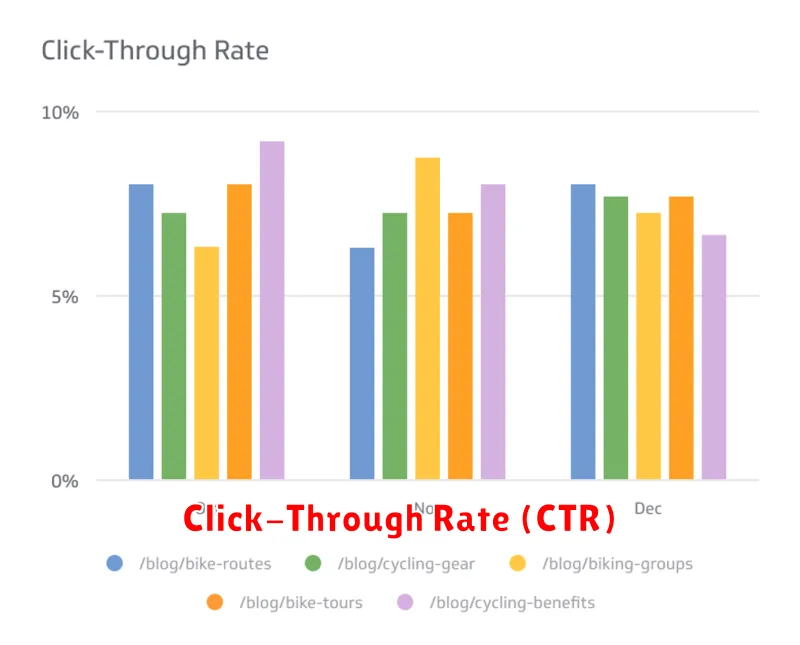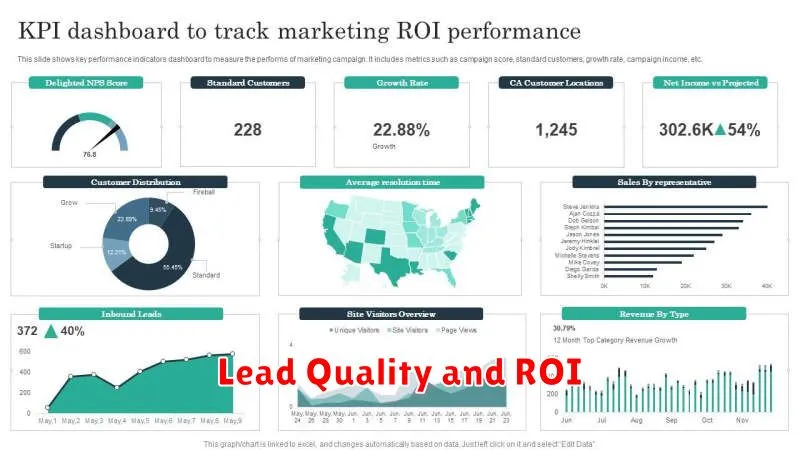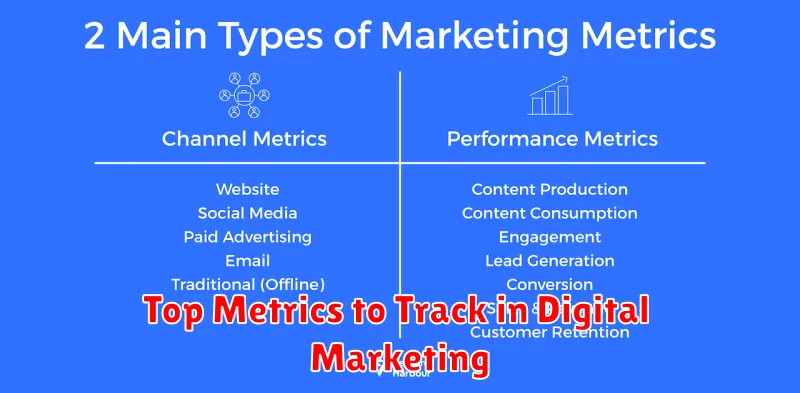In today’s dynamic digital landscape, effective marketing hinges on understanding and analyzing key performance indicators (KPIs). Tracking the right metrics provides invaluable insights into campaign performance, audience behavior, and return on investment (ROI). This article will delve into the top metrics to track in digital marketing, enabling you to optimize your strategies, refine your approach, and achieve demonstrable success in the online realm. Whether you’re focused on search engine optimization (SEO), social media marketing, or pay-per-click (PPC) advertising, understanding these essential metrics is paramount.
From website traffic and conversion rates to customer lifetime value (CLTV) and engagement rates, we’ll explore the metrics that truly matter in digital marketing. By mastering these metrics, you can make data-driven decisions, allocate resources effectively, and ultimately achieve your marketing objectives. This guide will equip you with the knowledge to identify the most relevant metrics for your specific digital marketing campaigns and empower you to measure, analyze, and improve your online performance.
Traffic and Source Breakdown
Understanding where your website traffic originates is crucial for optimizing marketing campaigns and resource allocation. Traffic source breakdown reveals which channels are driving the most visitors to your site.
Key metrics to analyze within traffic and source breakdown include:
- Organic Search: Traffic from search engines like Google, indicating the effectiveness of your SEO strategy.
- Paid Search: Visitors arriving through paid advertising campaigns, reflecting the ROI of your paid efforts.
- Social Media: Traffic generated from social media platforms, demonstrating the success of your social media marketing.
- Referral: Visitors coming from other websites linking to yours, highlighting the impact of backlinks and partnerships.
- Direct: Traffic from users typing your URL directly into their browser, often indicating brand awareness and returning visitors.
- Email Marketing: Visitors clicking links within your email campaigns, reflecting the effectiveness of your email marketing strategy.
By analyzing this data, you can identify your most effective channels, understand user behavior, and refine your strategies to drive more targeted traffic.
Conversion Rates and CPA
Conversion rate and cost per acquisition (CPA) are two crucial metrics that provide insights into the effectiveness of your marketing campaigns in driving desired actions.
Conversion rate is the percentage of users who complete a specific action out of the total number of visitors. A high conversion rate indicates that your campaigns are effectively resonating with your target audience and leading them towards the desired outcome, whether it’s a purchase, a form submission, or a subscription. Tracking conversion rates helps you identify which campaigns and channels are performing well and which need optimization.
CPA represents the average cost you incur for each conversion. Calculating CPA involves dividing the total cost of your marketing campaign by the number of conversions generated. Monitoring CPA allows you to assess the efficiency of your spending and identify areas where you can potentially reduce costs while maintaining or improving conversion rates.
Click-Through Rate (CTR)

Click-Through Rate (CTR) is a key performance indicator (KPI) that measures the percentage of people who see your ad (impressions) and then click on it. It’s a crucial metric for evaluating the effectiveness of your online advertising campaigns.
A high CTR generally indicates that your ads are relevant and resonate with your target audience. It suggests that your ad copy, visuals, and targeting are working well. Conversely, a low CTR might signal a need to revise your ad creative, targeting parameters, or both.
CTR is calculated with a simple formula:
(Total Clicks / Total Impressions) * 100 = CTR
For example, if your ad received 1000 impressions and 50 clicks, your CTR would be 5%.
Monitoring CTR helps you understand how well your ads are performing and provides insights into how to optimize your campaigns for better results.
Bounce Rate and Session Duration
Bounce rate represents the percentage of visitors who enter a website and then leave (“bounce”) rather than continuing to view other pages within the same site. A high bounce rate can indicate issues with site content, user experience, or targeting. It suggests that visitors aren’t finding what they’re looking for or that the site isn’t engaging enough to encourage further exploration.
Session duration, on the other hand, measures the average length of time visitors spend on a website during a single session. Longer session durations typically suggest greater engagement and interest in the site’s content. Analyzing session duration can help identify which content is resonating with visitors and which areas might need improvement to hold user attention.
Analyzing these two metrics together provides valuable insight into visitor behavior. For example, a high bounce rate coupled with a short session duration strongly suggests a problem with the website’s effectiveness. Conversely, a low bounce rate and a long session duration generally indicate that the website is performing well and engaging its target audience.
Lead Quality and ROI

Lead quality and return on investment (ROI) are crucial metrics for evaluating the effectiveness of digital marketing campaigns. High-quality leads are more likely to convert into paying customers, directly impacting ROI.
Assessing lead quality involves analyzing factors such as lead demographics, engagement level, and buying intent. Leads that closely match your ideal customer profile (ICP) are considered high-quality.
Calculating ROI involves comparing the cost of your marketing campaigns to the revenue generated from those campaigns. A positive ROI indicates that your campaigns are profitable.
Tracking these metrics helps optimize campaigns for better performance and allocate budget effectively. Focusing on attracting high-quality leads ultimately increases overall ROI.
Tracking User Behavior
Understanding user behavior is crucial for optimizing digital marketing campaigns. By analyzing how users interact with your website or app, you can identify areas for improvement and enhance the user experience.
Key metrics to track include:
- Bounce Rate: The percentage of users who leave a webpage after viewing only one page. A high bounce rate may indicate poor user experience or irrelevant content.
- Time on Page/Site: Indicates user engagement. Longer times suggest interesting content, while short times might signal a need for improvement.
- Pages per Session: The average number of pages viewed during a single session. Higher numbers can indicate strong user engagement and effective site navigation.
- Conversion Rate: The percentage of users who complete a desired action, such as making a purchase or filling out a form. This is a key indicator of campaign effectiveness.
Analyzing these metrics helps identify trends and patterns in user behavior, allowing marketers to make data-driven decisions to improve campaign performance and achieve business objectives.

